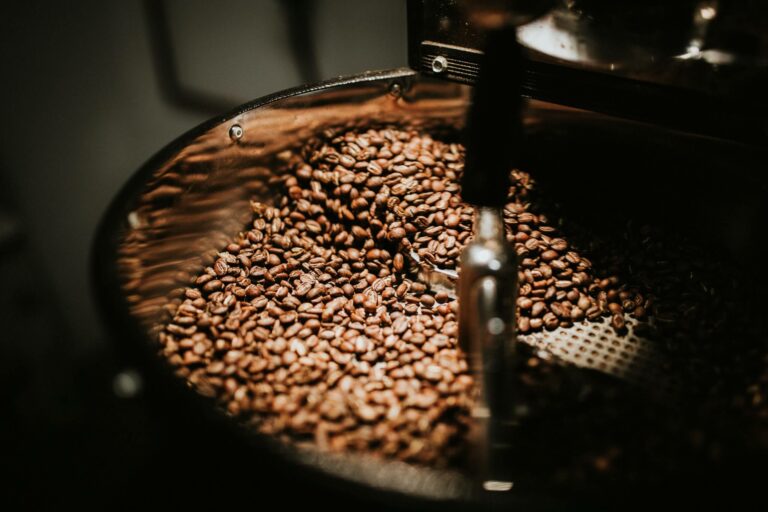The Basics of Roasting Coffee
While still on the plant, coffee beans are seeds that develop inside a cherry. Coffee beans in their natural state are green in color, and while they don’t smell much like coffee as we know it, they have an earthy aroma similar to grass. The roasting process develops the flavor compounds of coffee, but different roasting techniques will have different effects on the coffee’s flavor.
Step 1 in Roasting Coffee – Drying:
Roasting is the process of turning coffee beans from green to brown, but before we can roast, we must dry the coffee beans. Drying can be done quickly in 8 minutes or less if using a drum roaster. At the end of the drying process, the beans will have a temperature of 160 degrees, which will begin the browning stage.
Step 2 – Browning
The browning stage of the coffee roasting process should be taken slowly to allow for aroma and flavor compounds to develop. The Maillard reaction, similar to caramelization, is a chemical reaction between amino acids and reducing sugars that is responsible for the flavor compounds the coffee will have. This process is also present when we brown meat, toast bread, or toast marshmallows. At the end of the browning stage, the coffee beans will start to crack open as they expand with heat. This is audible and familiar, like the popping of popcorn.
Step 3 in Roasting Coffee – Development
There are 2 cracks that can occur when roasting coffee. The first happens after browning, when the beans start developing and making a light to medium roast. Developing dark roasts will require roasting past the second crack. Development time is the difference between the acidic, more fruity flavors of light/medium roasts versus the roasty and burnt flavors of a dark roasted bean.
Eximius Coffee, located in Houston Texas, provides coffee roasting services. Using temperature control and precise cooling systems, Eximius Coffee can ensure that each batch is consistent and the highest quality product.


